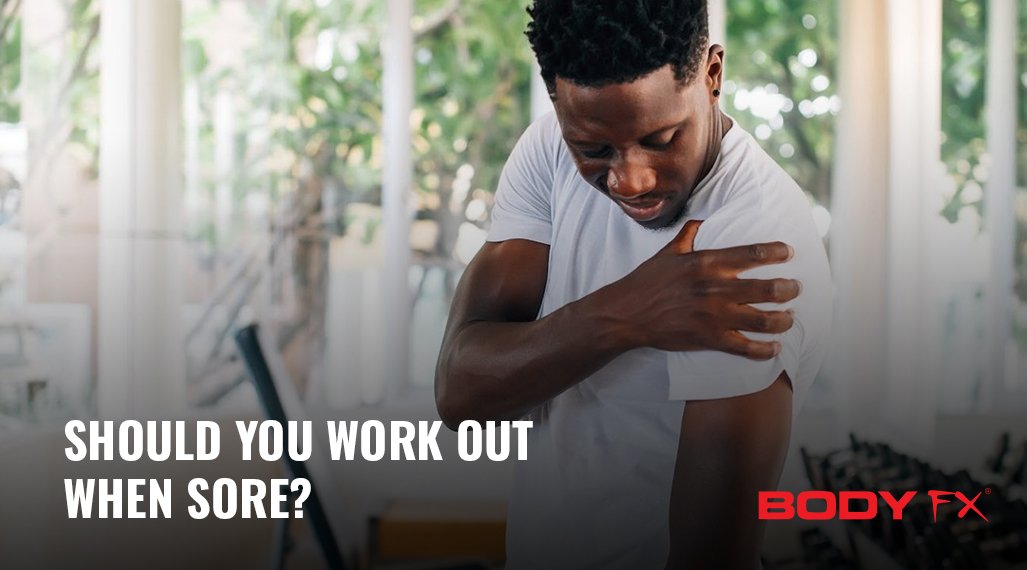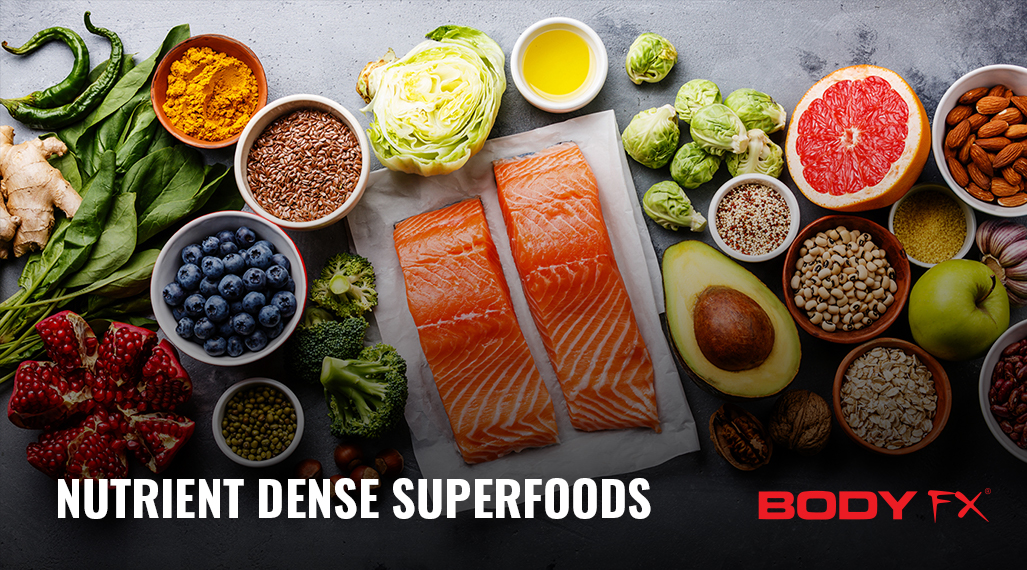Ever Felt Sore After A Hard Workout?
Working out causes tiny tears in your muscles that leaves them in need of rest and recovery. As your muscles recover, they can also gain strength and mass. Leaving time in between more intense workouts or cycling through the muscle groups you are working gives your muscles time to go through the recovery process, allowing them to get stronger.
It’s always important to factor in rest and recovery time to your workout routine. However, it’s also essential to know how to address the soreness that comes naturally with working out. Sometimes, this soreness can be a sign that you may be dealing with an injury and need an extended rest period. However, the majority of the time, the aches and pains you feel in the days following a hard workout aren’t severe enough to stop you from continuing with your weekly fitness routine.
From this helpful article, you’ll learn how to address post-workout soreness and find out the best ways to determine whether you’ve given your muscles enough rest to work out again. Sometimes, a few days will pass after a tough workout and you’ll still feel some soreness. Keep reading to learn how to tell when it’s time to work out again when you’re dealing with post-workout soreness, plus some helpful tips for keeping those aches and pains to a minimum.
Keeping Things Challenging
As you now know, higher-intensity exercise, like resistance training or weightlifting, will cause your muscles to tear and eventually strengthen. As you progress towards your fitness goals, your body will get more and more used to the resistance you face during workouts. For this reason, it’s essential to challenge yourself more and more as you go. Increasing the amount of weight you lift, the distance of your runs, or the amount of reps in a set are great ways to keep the intensity of your workouts up. Otherwise, your body will eventually hit a plateau – it won’t respond as dramatically to your workouts.
Soreness is a natural part of your muscles’ recovery and strengthening process. It’s not something to fear or avoid, but it can be uncomfortable and hinder the effectiveness of your workouts. Working out while you’re still sore from your previous workout can be tough, but soreness doesn’t mean you shouldn’t keep exercising. It does, however, mean that it’s important to be smart when planning your workouts.
Switching It Up
If you just did a workout that targeted a specific muscle group, those muscles are going to need some time to rest before you target them again. This doesn’t mean that you need to wait to work out other muscle groups. It’s always a good idea to switch things up throughout the week, targeting different muscle groups on different days or even rotating cardio and strength training.
Diversifying your workouts means that you won’t be putting too much strain on one part of your body. In addition, it helps balance out your fitness routine. You don’t want to only work out one part of your body – even if you avoid leg day like the plague, you’ll be glad you did it in the long run. The best personal fitness strategies aim for increased overall health, endurance and strength.
However, if you have specific fitness goals that cause you to lean towards a certain form of exercise, diversifying your workouts can be tougher. For example, if you are an athlete, your workouts throughout the week will be geared towards improved performance in your sport. Fortunately, specific goals in fitness do not mean that you need to do the same workout over and over throughout the week. It’s always a good idea to rotate your workouts, allowing for rest and recovery while continuing to exercise.
Pushing Through
Soreness can make working out a little uncomfortable, but it shouldn’t prevent you from exercising in general. Don’t be afraid to work out when you feel sore, especially because the more you push through, the more your endurance will increase.
One of the best ways to stay consistent in your workouts, despite muscle soreness, is to take good care of your body. This means eating well, getting adequate sleep, and staying hydrated. Each of these aspects of taking care of yourself play an essential role in managing your soreness. They won’t stop your muscles from hurting after a workout, but they’ll keep you healthy and help your body recover faster.
Drinking water whenever you feel thirsty before, during or after a workout is always a good move.
In addition to staying hydrated, good nutrition is essential. Foods that are nutrient-dense will supply your body with macronutrients and micronutrients that it needs to recover faster and build more muscle. Protein, fat and carbohydrates all play major roles in your recovery. In addition, opting for unprocessed forms of each of these three macronutrients will help improve your body composition.
Many fitness enthusiasts are duped into believing that carbs, fat or protein are unnecessary at best and harmful at worst. Don’t be deceived – you need a good balance of all of them for overall health and to get the most out of your fitness routine. Pay close attention to the quality of your food (avoiding junk and opting for the good stuff) and your recovery will be aided immensely.
Finally, getting enough sleep is essential for warding off muscle soreness and speeding up your recovery time. Getting a good night’s sleep sets you up to feel rested and ready for your next workout sooner. In addition, your muscles get time to recover when you give your body the high-quality sleep it needs.
Warming Up and Cooling Down
Easing in and out of your workouts is an excellent way to protect yourself from unnecessary injuries and make sure you are setting yourself up for a good post-workout recovery. Warming up means starting out a workout at a lower intensity and moving up from there. Cooling down can involve stretching, walking, or one of our Body FX cool down programs to help your muscles loosen up after the strain your workout put on them.
Warming up and cooling down won’t prevent post-workout soreness, but they can make a major difference in how you feel during and after your workouts. Instead of trying to jump right into a high-intensity workout, warming up gets your body ready for what’s ahead. Likewise, cooling down gives your body time to readjust after you’ve finished a tough workout.
Depending on your exercise routine, warming up and cooling down may look different. However, post-workout stretching is always a good option for cooling down. When you start a workout, getting your blood flowing and your body ready to move is essential. Afterwards, it’s more important to get your muscles loosened up.
Dealing With Soreness
As you now know, soreness after a workout is normal and difficult to entirely avoid. Because of this, it’s wise to know how to take care of yourself when you’re experiencing some post-workout soreness. On top of good sleep, hydration and nutrition, there are a few recovery practices that can ease your soreness and get you back to the gym sooner.
Many fitness enthusiasts find that taking a cold shower helps their muscles relax after a hard workout. However, this is not considered a pleasant activity by many – freezing cold water is not quite as nice as the classic hot shower. For this reason, some prefer to incorporate contrast showers into their recovery routine. A contrast shower involves alternating between hot and cold water in increments. This can boost your recovery by helping your muscles loosen up and relax and is more bearable than an all-cold shower.
When post-workout soreness is especially uncomfortable, muscle rubs and creams can come in handy. These topical solutions usually provide a cool, burning sensation which can ease the discomfort of soreness. If you are struggling to recover after an especially difficult workout, muscle rub can come in handy.
Finally, one of the best ways to deal with muscle soreness without sacrificing your daily exercise is lowering the intensity for a bit. If you just had a tough workout and you’re feeling sore, taking a day to just walk or perform a light Body FX stretch routine can be a good move. This means you’ll still get daily exercise but won’t need to potentially subject your body to a painful workout before it’s ready. Walking, as well as other forms of lower-impact exercise, are great for your overall health and wellbeing, and can play a role in anyone’s exercise routine. If you try to do high-intensity workouts every day of the week, especially without much prior experience, you may end up discouraged and worn out. Taking days to engage in lower-intensity exercise helps to keep you on track in your fitness journey without getting burnt out by too much too fast.








